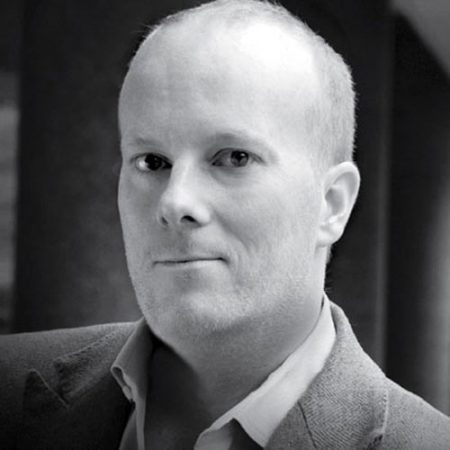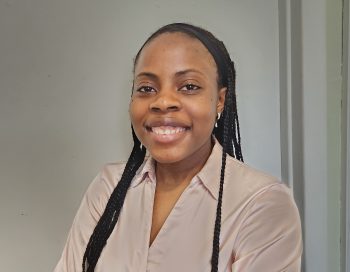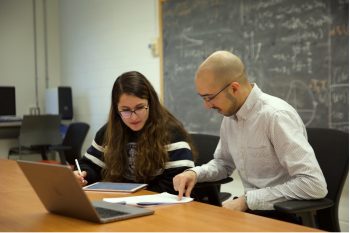Two thousand metres below the surface of the Pacific Ocean, tiny bacteria survive in near-darkness by harvesting the dim light released from hydrothermal vents.
As humans increasingly look to the sun as a renewable energy source, what better model than these and other remarkably efficient organisms found in nature?
From October 8–9, a group of world experts in solar cell research are gathering at the University of Toronto to explore the question: what can plants teach humans about solar energy?
Hosted as part of the $1-million 2014 Connaught Global Challenge, the symposium, Bio-Inspired Ideas for Sustainable Energy, includes invited talks, poster sessions, industry networking and a public talk by special guest Sir Richard Friend of Cambridge University.
Led by Professor Ted Sargent (ECE), U of T Engineering’s vice dean, research, the symposium is inviting all U of T faculty and staff interested in sustainable energy to register for free.
To learn more about the event, U of T Engineering’s Sydney Goodfellow spoke with Professor Sargent:
Finding new solutions to our global energy crisis is no easy task – why is the Connaught Global Challenge symposium unique?
This symposium is exciting because great minds from around the world are converging in Toronto, and it’s a whole new combination of brainpower. These aren’t just leaders from one field, they’re from a whole range of different fields, and they’re coming here to learn from each other, to work towards a common goal.
People in the field of quantum biology and photobiology – specialists in the mechanisms underpinning photosynthesis – have been saying for a long time that we should look to nature to make our energy production more efficient, but nobody’s been asking how. At this symposium, we are coming together to learn from each other. Our goal is to see projects and partnerships emerge from it that will lead to further progress in solar energy – both electricity and stored fuels.
With all of these world experts converging in Toronto, could you share who at the University of Toronto and across the city may benefit from attending?
The symposium is very inclusive. Many of the attendees will be engineering and science graduate students, but it’s open across campus and appeals to a number of different fields. The more people who join from different academic and professional backgrounds the better, from physicists to materials scientists to political and environmental science students interested in energy policy.
Part of the symposium is a public lecture with Sir Richard Friend. Who is Sir Friend and what can we expect from his lecture?
[Sir Richard Friend] is a pioneer in plastic electronics, or flexible electronics. He’s had a tremendous amount of global success with turning flexible plastic materials into active devices for displays, lasing, and energy conversion.
Sparked by the ideas of photobiologists, Richard says in the abstract for his lecture that, when it comes to solar energy, nature has us beat every time: they reproduce and propagate naturally with only the power of the sun; they’re extremely efficient at using a broad spectrum of light and they remove carbon dioxide from the air in the process.
He is both inspiring and inspired by the general thrust of the symposium. We invited him to think big, to lay out the vision for the next few decades of energy generation, in particular in the role of renewable resources and natural energy production.
What are the intended outcomes of this conference?
We seek to spark a new field. This symposium is, at its core, a conversation between some of the world’s energy leaders, and the next stage will be to begin collaboration across traditional [research] boundaries to solve problems together. When the conference is done, we’ll set to work towards these goals – advances in clean energy technology that are crucial to society’s future.
In my research group, we create solar cells based on plastic flexible spray coating. We make cells that are particularly good at absorbing more of the sun’s spectrum, from the visible into the infrared. We get our inspiration from nature, because nature is great at harvesting the full rainbow spectrum of sun. Algae, for example, stack themselves in layers – a green layer, a blue layer, and so on – until they make up the full spectrum. They’re extremely efficient in handling the sun’s broad spectrum, and we gain inspiration and learn from them.
In addition, we work with soft materials that you spray down as a coating. But because they’re soft, they have all sorts of imperfections. This makes it hard for electrons to travel across their surface, but plants have these same imperfections and they transport energy very well. We’re trying to improve our electron transport abilities by looking at how nature does it. We’re also looking into antenna technology, modeling again off of plants, which will increase the rate at which our materials are able to absorb light.
Learn more about the Connaught Global Challenge Symposium: Bio-Inspired Ideas for Sustainable Energy.



